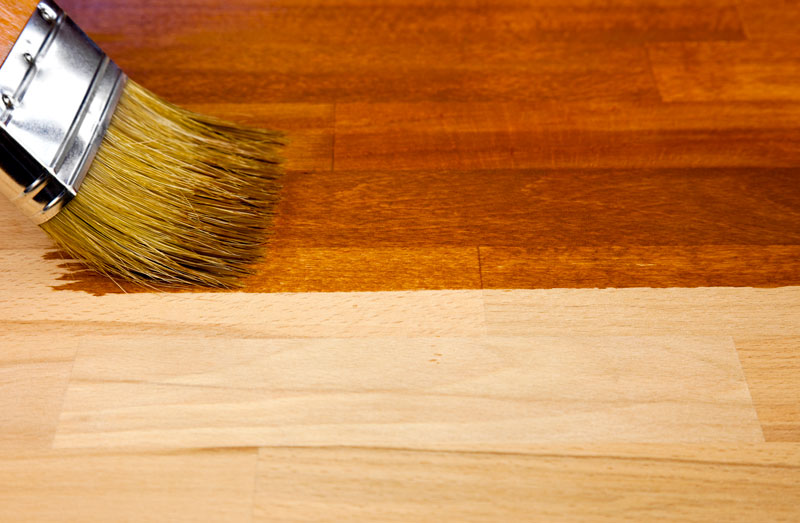
Wooden floors have an enduring charm that adds warmth and character to any home. However, over time, these once-lustrous surfaces can lose their sheen, succumbing to wear, scratches, and the passage of time. The good news is that with the right approach, wood floor restoration can breathe new life into aging floors, reviving their natural beauty and preserving the timeless elegance they bring to a space.
Understanding the Need for Restoration
Wood floors, especially in older homes, bear the marks of history and foot traffic. Scratches, dents, faded finishes, and worn-out areas are common signs of aging. While these imperfections may tell a story, they can also diminish the overall appeal of your living space. This is where wood floor restoration comes into play.
Restoration is not merely a cosmetic endeavor; it’s a rejuvenation process that involves repairing, refinishing, and enhancing the structural and aesthetic aspects of your wood floors. The goal is to bring the wood back to its former glory, erasing the signs of wear and tear and ensuring its longevity for years to come.
The Restoration Process
1. Inspection and Assessment:
- The restoration journey begins with a thorough inspection of the wood floors. Professionals assess the extent of damage, identify any underlying issues, and determine the type of wood and finish. This evaluation helps create a tailored restoration plan.
2. Repairs and Replacements:
- Damaged or weakened boards are addressed during the restoration process. Whether it’s filling in gaps, repairing scratches, or replacing irreparable boards, this step ensures the structural integrity of the floor.
3. Sanding:
- Sanding is a crucial component of wood floor restoration. It involves the removal of the existing finish and a thin layer of wood to expose a fresh surface. This process eliminates scratches, stains, and unevenness, preparing the wood for refinishing.
4. Staining (Optional):
- If you desire a change in the color of your wood floors, staining is an option during the restoration process. This step allows you to customize the look of your floors, whether you prefer a lighter or darker finish.
5. Refinishing:
- The final step in the restoration process is refinishing. A new finish, such as polyurethane, lacquer, or oil-based sealant, is applied to protect the wood and enhance its natural beauty. Refinishing not only restores the aesthetic appeal but also shields the wood from future damage.
Benefits of Wood Floor Restoration
Preserving Heritage:
- In older homes, wood floors often carry a sense of history. Restoration preserves this heritage by retaining the original features and characteristics of the wood, ensuring that the floors continue to tell their unique story.
Enhancing Property Value:
- Well-maintained and restored wood floors contribute significantly to a home’s resale value. Potential buyers are drawn to the timeless appeal of restored wood, making it a worthwhile investment for homeowners looking to sell or upgrade their property.
Cost-Effective Alternative:
- Restoration is a cost-effective alternative to complete floor replacement. While new flooring installations can be expensive and disruptive, restoration allows you to achieve remarkable results at a fraction of the cost.
Environmental Sustainability:
- Choosing restoration over replacement is an environmentally conscious decision. By preserving existing wood floors, you contribute to sustainability by reducing the demand for new materials and minimizing waste.
Customization Options:
- Wood floor restoration offers customization options, such as choosing a different stain or finish. This flexibility allows homeowners to update the look of their floors to match evolving interior design preferences.
DIY vs. Professional Restoration
While there are DIY wood floor restoration kits available, the intricacies of the process make professional restoration highly recommended. Professionals bring a wealth of expertise, specialized equipment, and a keen eye for detail to the task. DIY attempts may risk uneven sanding, improper stain application, or insufficient protection during refinishing.
Professionals can assess the unique needs of your wood floors, recommend the right restoration techniques, and execute the process with precision. Additionally, they have access to high-quality finishes and sealants that may not be readily available for DIY projects.
Conclusion
Wood floor restoration is a transformative journey that allows you to uncover the hidden beauty beneath years of wear and tear. It’s not just about aesthetics; it’s a commitment to preserving the heritage of your home and making a sustainable choice for the environment. Whether you’re looking to revive the original luster of an old floor or customize its appearance to suit modern tastes, restoration is a time-tested solution that brings old floors back to life. Consider consulting with professionals to embark on this journey, and let the natural beauty of your wood floors shine through once again.
Best Handmade Wood Furniture Near in Maryland and DC
June 26, 2025
Comments are closed.







